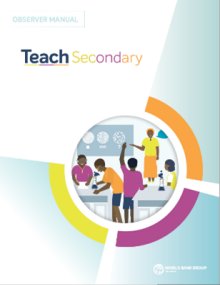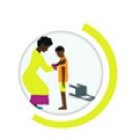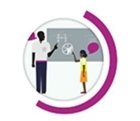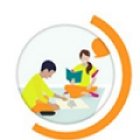>> Read more
Introductory Video to the Teach suite of tools: English| Arabic | French | Spanish
Teach Secondary tool: English | French | Portuguese | Russian | Spanish
Teach Secondary Observer Manual: English | French | Portuguese | Russian | Spanish
Teach Secondary Brief: English | French | Portuguese | Russian | Spanish
See more: Teach ECE |Teach Primary
Learn more about how Teach been deployed in the field: Teach in Action - Three Case Studies of Teach Implementation brochure: English | Spanish
Learn more about the broader work of the WBG Teachers’ Team: Podcast (Apple & Spotify) | Newsletter
Contact us: teach@worldbank.org
|
|
|
Meet the Teach Secondary Team | Teach Secondary Complementary Resources | Teach Secondary-Related Research |
About Teach Secondary
- The tool holistically measures what happens in secondary classrooms based on the Teach framework, by measuring time on task and the quality of teaching practices:
- Teach Secondary captures secondary teaching practices that contribute to students’ cognitive as well as their socioemotional development. The tool provides rigorous descriptions and examples from different subject areas for students. It captures quality across a range of educational settings, including teacher- directed, student-centered, and peer learning activities.
- Teach Secondary is designed to align with Teach Primary for ease of implementation and to facilitate continuity of measurement in countries. Teach Secondary maintains the 4 Areas from Teach Primary but expands upon two of these —Time on Learning and Instruction— to better capture the greater cognitive demand that secondary school can bring and the increased independence of adolescent students in the classroom. Additionally, Teach Secondary extends behavior and critical thinking task examples beyond mathematics and language arts to capture learning that occurs within science subjects including physics, chemistry, and biology.
- Teach Secondary was developed with low- and middle-income countries in mind and can be contextualized for different settings. The tool includes a checklist that captures aspects of structural quality, which can also contribute to improved process quality or teaching practices. Local video footage is used to train observers on the tool and additional elements can be added to further contextualize the tool at the request of the government.
- Teach Secondary has a cross-cutting focus on inclusion. The tool includes a focus on the inclusion of students with disabilities by capturing whether teachers exhibit bias and challenge stereotypes within the classroom; how they use of multiple forms of representation to explain content to students, and the preplanned and spontaneous adjustments to teaching that they make to accommodate the different needs or learning levels of students.
- Teach Secondary uses evidence-based teaching practices from countries around the world and has been tried and tested in diverse contexts. To finalize a working version of the tool, Teach Secondary underwent a rigorous process of development which has involved researching, revising, piloting and validating different iterations to ensure that it measures teaching practices that have been shown to be associated with student learning.
- Teach Secondary comes with a suite of resources to support its use. These are meant to provide support in every step of the tool’s implementation, including initial conversations with relevant stakeholders, training observers, using the tool to collect data in the field, cleaning and analyzing the data, and producing and sharing results.
What does Teach Secondary measure?
Teach Secondary captures:
- The time teachers spend on learning and the extent to which students are on task,
- The quality of teaching practices that help develop students’ socioemotional and cognitive skills, and
- Other aspects of the learning environment such as the accessibility of the physical environment, including the classroom set-up and materials available.
The Teach Secondary Framework

The Quality of Teaching Practices component is organized into three primary areas: Classroom Culture, Instruction, and Socioemotional Skills. These areas have nine corresponding elements that point to twenty-nine behaviors. The behaviors are characterized as low, medium, or high, based on the evidence collected during the observation. These behavior scores are translated into a 5-point scale that quantifies teaching practices as captured in a series of two 15-minute lesson observations.
- Classroom culture: The teacher creates a culture that is conducive to learning. It is focused on monitoring the extent to which the teacher creates a supportive learning environment and sets positive behavioral expectations.
- Instruction: The teacher instructs in a way that deepens student understanding and encourages critical thought and analysis. It is focused on capturing the extent to which the teacher facilitates the lesson, checks for understanding, provides feedback, and encourages students to think critically.
- Socioemotional skills: The teacher fosters socioemotional skills that encourage students to succeed both inside and outside the classroom by establishing autonomy, promoting perseverance, and fostering social and collaborative skills.
Finally, Teach Secondary provides a checklist to assess other aspects of the learning environment, including the accessibility of the physical environment and some aspects of the classroom setup and materials available, which can be used together with the classroom observation components.
How does Teach Secondary differ from Teach Primary?
The differences between the two tools relate primarily to the age ranges and curricula content being observed. The main changes reflected in Teach Secondary and in comparison to Teach Primary are:
- Developmental level: Teach Secondary includes modified descriptions and examples to be more relevant and developmentally appropriate for secondary students and to reflect quality across a range of cultural contexts and different secondary teaching practices including teacher-centered, student-centered and peer learning activities.
- Greater emphasis on critical thinking: Teach Secondary includes an expanded critical thinking element to capture the greater cognitive demand of secondary classrooms and the importance of students being provided with opportunities to explain thinking during lessons.
- Enhanced subject representation: Teach Secondary includes an extension of the thinking tasks table and behaviour examples to facilitate understanding of how the tool can be applied in different secondary school contexts. The table incorporates examples beyond mathematics and language arts to capture learning that occurs within science subjects including physics, chemistry, and biology.
- Increased student agency: Teach Secondary includes an expanded Time on Learning area to capture the extent to which students are actively participating in learning tasks, and modifies several behaviours within the tool to capture students’ increased agency in the classroom. It also promotes changes in response to students’ growing autonomy and responsibility at the secondary level.
How can Teach Secondary be used?
Teach Secondary can be used for different purposes depending on the country context and project goals.
Teach Secondary can be used as a system diagnostic, allowing governments to get a clear snapshot of the current state of teaching practices and teaching quality in classrooms. In this capacity, Teach Secondary can be leveraged as a monitoring and evaluation (M&E) tool to assess the results of a specific education policy or program that targets teacher practices, such as the deployment of a new curriculum or a new instructional model.
Teach Secondary can also be used as part of a teacher professional development system to identify individual teachers’ strengths and weaknesses and to provide targeted support to teachers.
Last Updated: Mar 28, 2024



